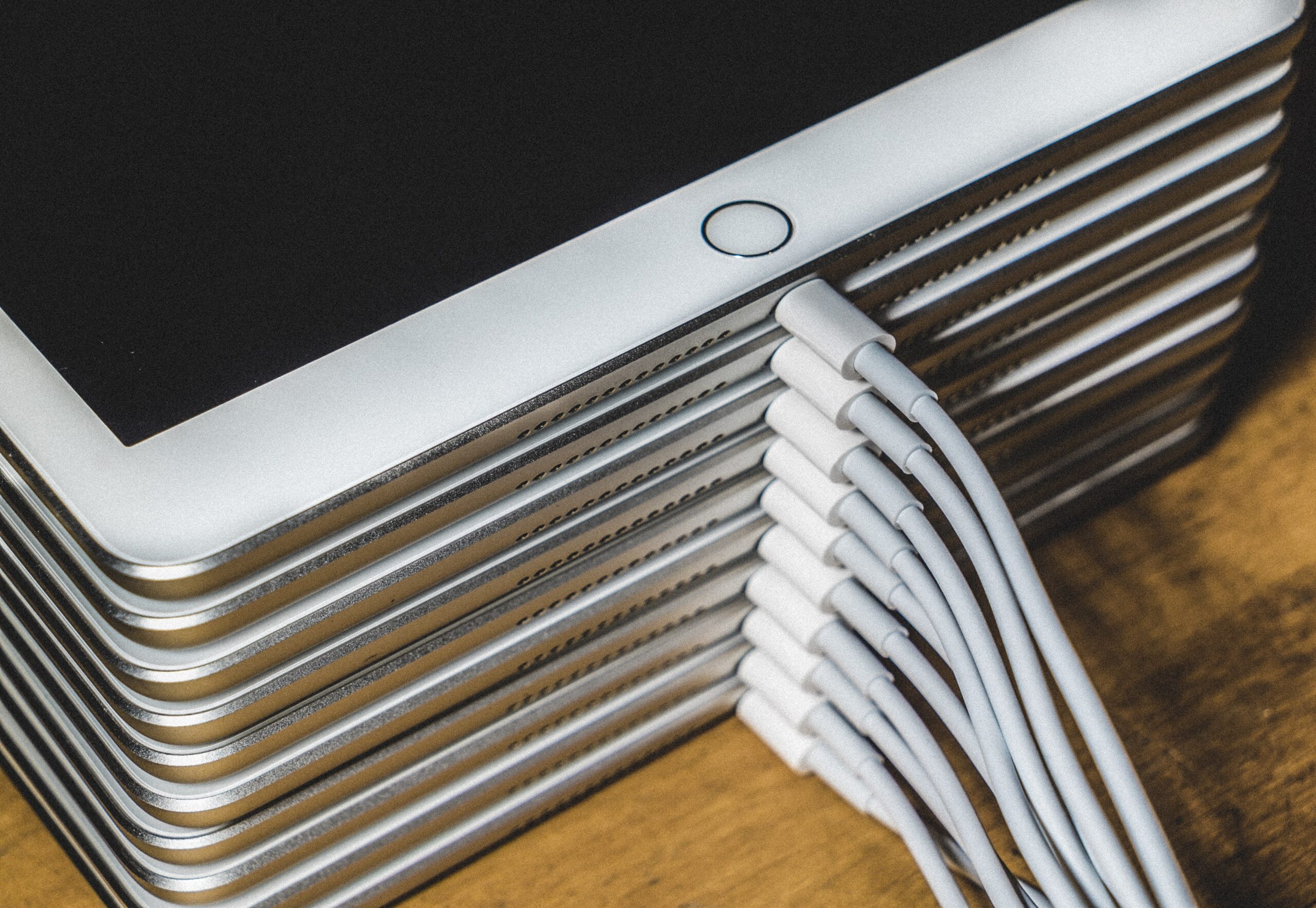iPad not charging? This could be going on!
Make appointmentiPad charging slowly? This could be going on!
Your iPad is charging slowly? This is a problem that makes no one happy and is unfortunately common. But now what? In some cases, this problem is easy to fix. In this blog, we are going to cover step by step what could be wrong when your iPad is not charging or charging slowly. Here, we address the following points:
- Check the power supply
- Use original charger
- Plug does not supply enough current
- Replacing broken battery
iPad does not charge at all? Check the adapter, charging cable or power supply
Does your iPad not turn on at all or do you have a few % battery left but won’t turn up? Read more in our blog on what to do if your iPad stops charging at all.
Use original charger
Unfortunately, Apple’s chargers don’t last forever. You often need to purchase a new cable during the useful life of your iPad. Although Apple’s cables don’t always last; they are best for the life of your iPad. Often, when purchasing a new cable, the cheap version is chosen. Many people just don’t know that purchasing an incorrectly certified cable can have unpleasant consequences for your iPad. Using an incorrectly certified cable when charging your iPad can damage the power management chip. This can eventually result in charging problems and sometimes the iPad cannot be charged at all. This is an annoying damage that can only be repaired by replacement.
Also, your incorrectly certified cable may not be able to communicate properly with your iPad. Simply put, when you connect your iPad to the charger, the iPad tells the charger at what speed to charge. With a bad cable, it may not talk properly to your iPad and it will charge at the wrong speed. Often this is just too fast but in some cases it is too slow and charging takes forever. In either case, it can also lead to previously mentioned damage to your iPad.
Don’t know the difference between an improperly certified and properly certified cable read this blog: iPhone charger.
iPad charging off? Plug does not supply enough current
For the iPad, Apple has developed a special charger. This charger allows you to charge all Apple products. Unfortunately, this does not work the other way around. If you try to charge an iPad with an iPhone charger, you may experience several problems such as: the iPad charges slowly, the iPad stops charging, or the iPad makes contact but does not charge. All of these problems indicate the use of the wrong adapter. Often the iPad gives a message at this point: charging off. In this case, the adapter used has too low a wattage, which means that the iPad will not charge, or almost not charge at all. Therefore, when charging your iPad, it is important to always check that the adapter provides at least 10 watts. The adapters often supplied by Apple for iPhones are 5 watts, for iPads usually 12 watts. For iPad the Pro, this is 20 watts.
iPad charges strangely due to bad battery
Still the same problem: iPad charges slowly? Or maybe just very quickly? It could also be because of your battery. All batteries can only be charged a limited number of times. How long your battery lasts depends on how much you use and charge the iPad. Because the capacity shrinks with use, a common problem with an old battery is precisely that it drains quickly and thus recharges quickly. Think of it as the gas tank in your car; a new iPad has a tank of, say, 100 liters. After several years of use, it has only 50 liters of capacity left and you can fill it up faster. Unfortunately, you also drive it empty again faster. In addition, consumption has gone up because your iPad is more heavily loaded with all kinds of apps and newer software. Do you suspect your battery is due for replacement? In these cases, we recommend stopping by a professional repair shop (such as ThePhoneLab – Click here for a location near you) to replace your iPad battery.
A professional diagnosis
At ThePhoneLab, we do a diagnostic to find out why the charging port, power management chip, charger or battery stops working. A diagnosis is always free of charge. After this you are not obliged to move on to repair, but of course you can!


